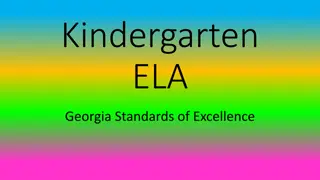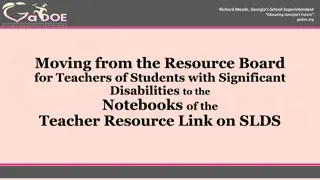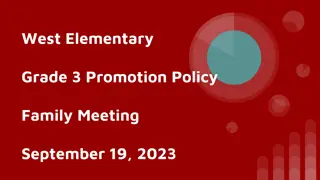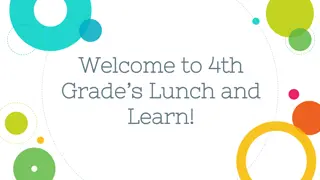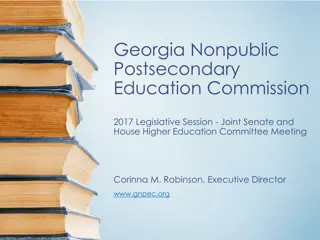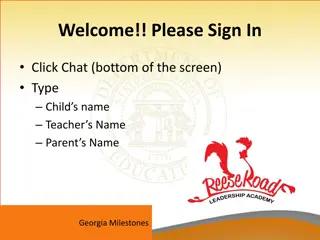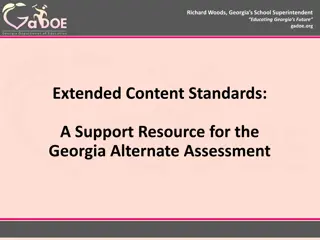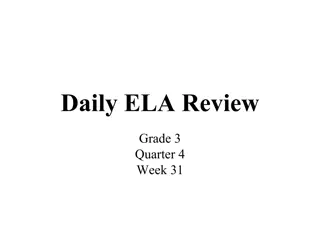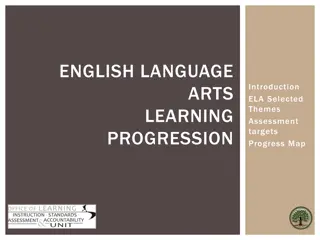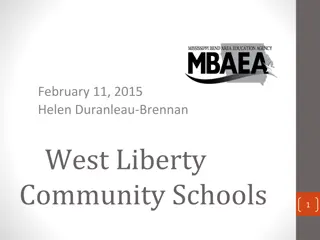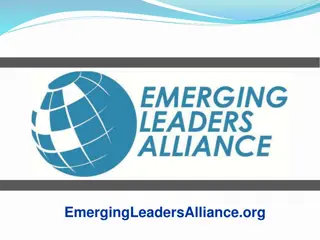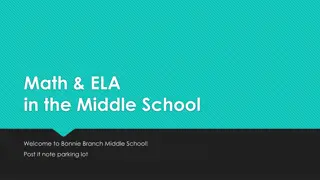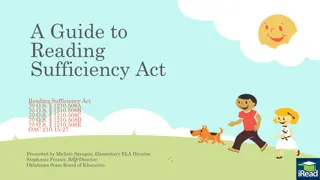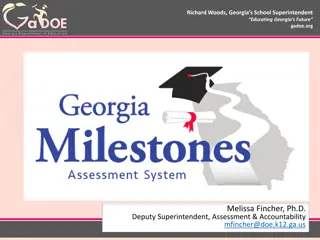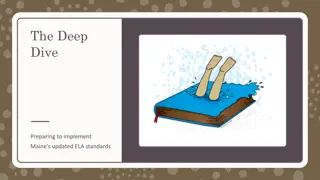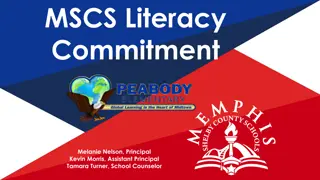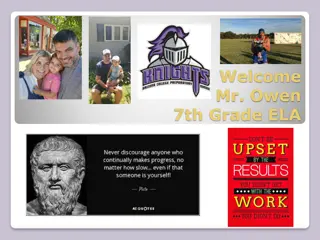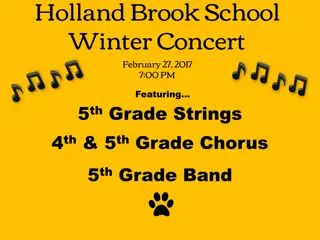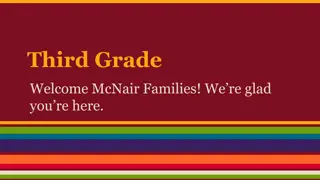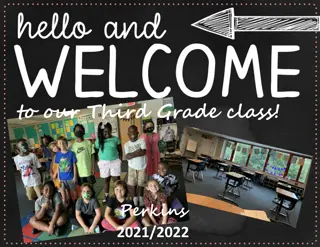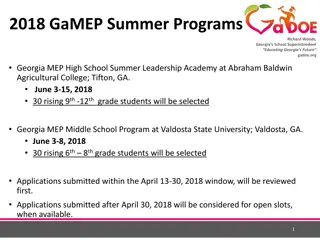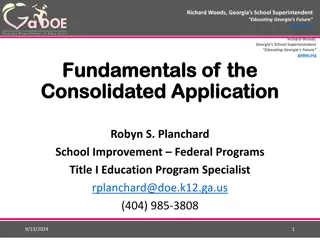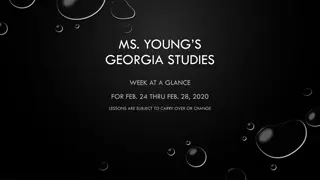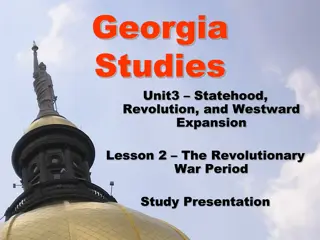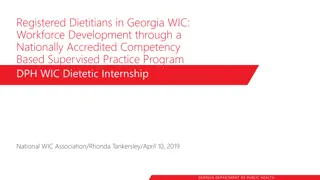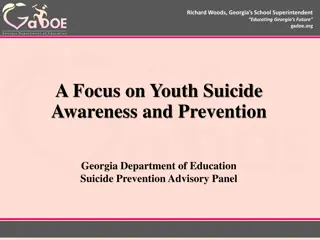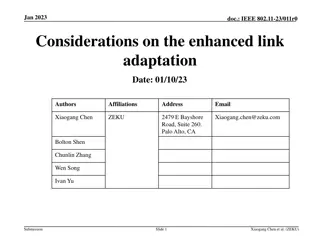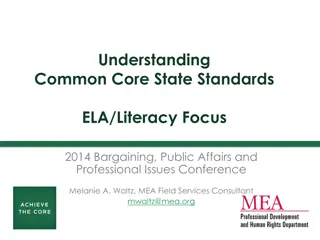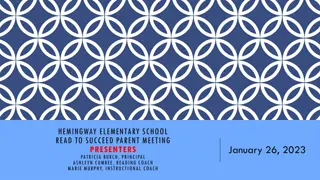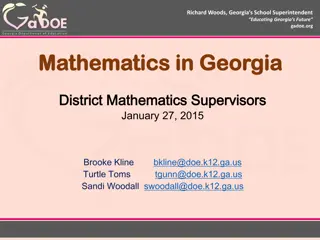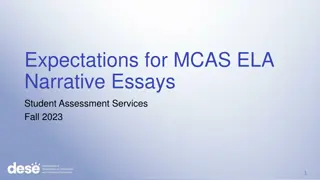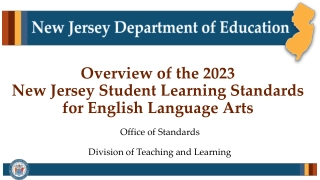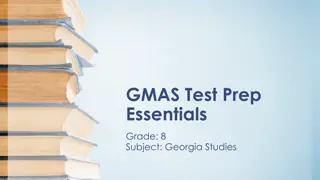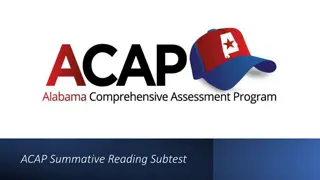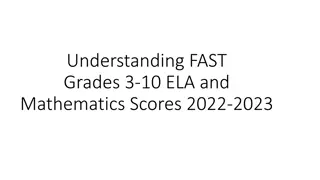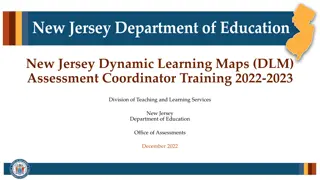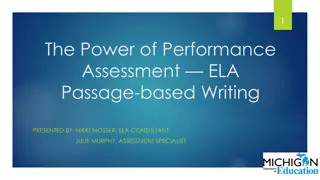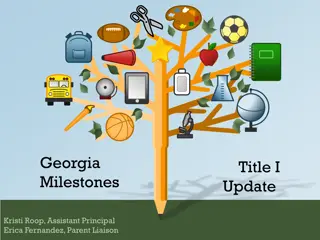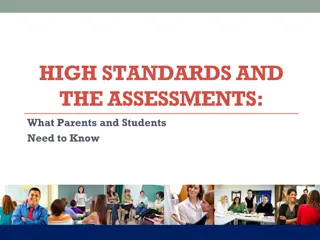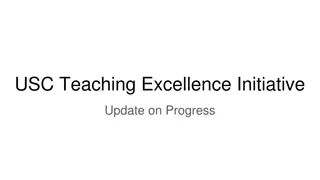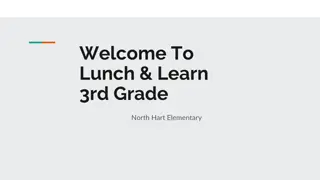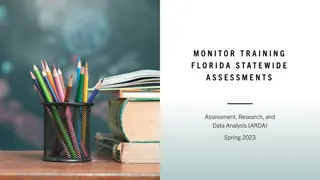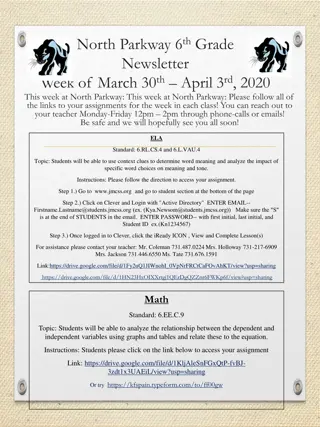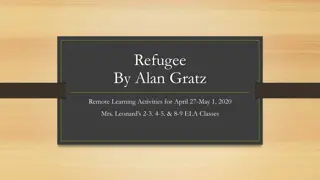Third Grade ELA Georgia Standards of Excellence
Explore the third-grade ELA Georgia Standards of Excellence focusing on reading literary key ideas and details, asking and answering questions, recounting stories from diverse cultures, describing characters in a story and their contributions to events, determining word meanings, referring to parts of stories, dramas, and poems, distinguishing personal point of view, integrating knowledge and ideas, and explaining how illustrations contribute to the story's message.
Download Presentation

Please find below an Image/Link to download the presentation.
The content on the website is provided AS IS for your information and personal use only. It may not be sold, licensed, or shared on other websites without obtaining consent from the author. Download presentation by click this link. If you encounter any issues during the download, it is possible that the publisher has removed the file from their server.
E N D
Presentation Transcript
Third Grade ELA Georgia Standards of Excellence
Reading Literary Reading Literary Key Ideas and Details
ELAGSE3RL1 ELAGSE3RL1 Ask and answer questions to demonstrate understanding of a text, referring explicitly to the text as the basis for the answers.
ELAGSE3RL2 ELAGSE3RL2 Recount stories, including fables, folktales, and myths from diverse cultures; determine the central message, lesson, or moral and explain how it is conveyed through key details in the text.
ELAGSE3RL3 ELAGSE3RL3 Describe characters in a story (e.g., their traits, motivations, or feelings) and explain how their actions contribute to the sequence of events.
Reading Literary Reading Literary Craft and Structure
ELAGSE3RL4 ELAGSE3RL4 Determine the meaning of words and phrases both literal and nonliteral language as they are used in the text.
ELAGSE3RL5 ELAGSE3RL5 Refer to parts of stories, dramas, and poems when writing or speaking about a text, using terms such as chapter, scene, and stanza; describe how each successive part builds on earlier sections.
ELAGSE3RL6 ELAGSE3RL6 Distinguish their own point of view from that of the narrator or those of the characters.
Reading Literary Reading Literary Integration of Knowledge and Ideas
ELAGSE3RL7 ELAGSE3RL7 Explain how specific aspects of a text s illustrations contribute to what is conveyed by the words in a story (e.g., create mood, emphasize aspects of a character or setting).
ELAGSE3RL9 ELAGSE3RL9 Compare and contrast the themes, settings, and plots of stories written by the same author about the same or similar characters (e.g., in books from a series).
Reading Literary Reading Literary Range of Reading and Level of Text Complexity
ELAGSE3RL10 ELAGSE3RL10 By the end of the year, read and comprehend literature, including stories, dramas, and poetry, at the high end of the grades 2-3 text complexity band independently and proficiently.
Reading Reading Informational Informational Key Ideas and Details
ELAGSE3RI1 ELAGSE3RI1 Ask and answer questions to demonstrate understanding of a text, referring explicitly to the text as the basis for the answers.
ELAGSE3RI2 ELAGSE3RI2 Determine the main idea of a text; recount the key details and explain how they support the main idea.
ELAGSE3RI3 ELAGSE3RI3 Describe the relationship between a series of historical events, scientific ideas or concepts, or steps in technical procedures in a text, using language that pertains to time, sequence, and cause/effect.
Reading Reading Informational Informational Craft and Structure
ELAGSE3RI4 ELAGSE3RI4 Determine the meaning of general academic and domain-specific words and phrases in a text relevant to a grade 3 topic or subject area.
ELAGSE3RI5 ELAGSE3RI5 Use text features and search tools (e.g., key words, sidebars, hyperlinks) to locate information relevant to a given topic quickly and efficiently.
ELAGSE3RI6 ELAGSE3RI6 Distinguish their own point of view from that of the author of a text.
Reading Reading Informational Informational Integration of Knowledge and Ideas
ELAGSE3RI7 ELAGSE3RI7 Use information gained from illustrations (e.g., maps, photographs) and the words in a text to demonstrate understanding of the text (e.g., where, when, why, and how key events occur).
ELAGSE3RI8 ELAGSE3RI8 Describe the logical connection between particular sentences and paragraphs in a text (e.g., comparison, cause/effect, first/second/third in a sequence).
ELAGSE3RI9 ELAGSE3RI9 Compare and contrast the most important points and key details presented in two texts on the same topic.
Reading Reading Informational Informational Range of Reading and Level of Text Complexity
ELAGSE3RI10 ELAGSE3RI10 By the end of the year, read and comprehend informational texts, including history/social studies, science, and technical texts, at the high end of the grades 2-3 text complexity band independently and proficiently.
Reading Reading Foundation Foundation Phonics and Word Recognition
ELAGSE3RF3 ELAGSE3RF3 Know and apply grade-level phonics and word analysis skills in decoding words. a) Identify and know the meaning of the most common prefixes and suffixes. b) Decode words with common Latin suffixes. c) Decode multi-syllable words.
Reading Reading Foundation Foundation Fluency
ELAGSE3RF4 ELAGSE3RF4 Read with sufficient accuracy and fluency to support comprehension. a) Read on-level text with purpose and understanding. b) Read on-level prose and poetry orally with accuracy, appropriate rate, and expression on successive readings. c) Use context to confirm or self-correct word recognition and understanding, rereading as necessary. d) Read grade-appropriate irregularly spelled words.
Writing Writing Text Types and Purpose
ELAGSE3W1 ELAGSE3W1 Write opinion pieces on topics or texts, supporting a point of view with reasons. a) Introduce the topic or book they are writing about, state an opinion, and create an organizational structure that lists reasons. b) Provide reasons that support the opinion. c) Use linking words and phrases (e.g., because, therefore, since, for example) to connect opinion and reasons. d) Provide a concluding statement or section.
ELAGSE3W2 ELAGSE3W2 Write informative/explanatory texts to examine a topic and convey ideas and information clearly. a) Introduce a topic and group related information together; include illustrations when useful to aiding comprehension. b) Develop the topic with facts, definitions, and details. c) Use linking words and phrases (e.g., also, another, and, more, but) to connect ideas within categories of information. d) Provide a concluding statement or section.
ELAGSE3W3 ELAGSE3W3 Write narratives to develop real or imagined experiences or events using effective technique, descriptive details, and clear event sequences. a) Establish a situation and introduce a narrator and/or characters; organize an event sequence that unfolds naturally. b) Use dialogue and descriptions of actions, thoughts, and feelings to develop experiences and events or show the response of characters to situations. c) Use temporal words and phrases to signal event order. d) Provide a sense of closure.
Writing Writing Production and Distribution of Writing
ELAGSE3W4 ELAGSE3W4 With guidance and support from adults, produce writing in which the development and organization are appropriate to task and purpose. (Grade-specific expectations for writing types are defined in Standards 1-3 above.)
ELAGSE3W5 ELAGSE3W5 With guidance and support from peers and adults, develop and strengthen writing as needed by planning, revising, and editing. (Editing for conventions should demonstrate command of Language Standards 1 3 up to and including grade 3.)
ELAGSE3W6 ELAGSE3W6 With guidance and support from adults, use technology to produce and publish writing (using keyboarding skills) as well as to interact and collaborate with others.
Writing Writing Research to Build and Present Knowledge
ELAGSE3W7 ELAGSE3W7 Conduct short research projects that build knowledge about a topic.
ELAGSE3W8 ELAGSE3W8 Recall information from experience or gather information from print and digital sources; take brief notes on sources and sort evidence into provided categories.
Writing Writing Range of Writing
ELAGSE3W10 ELAGSE3W10 Write routinely over extended time frames (time for research, reflection, and revision) and shorter time frames (a single sitting or a day or two) for a range of discipline-specific tasks, purposes, and audiences.
Speaking and Speaking and Listening Listening Comprehension and Collaboration
ELAGSE3SL1 ELAGSE3SL1 Engage effectively in a range of collaborative discussions (one-on-one, in groups, and teacher-led) with diverse partners on grade 3 topics and texts, building on others ideas and expressing their own clearly. a) Come to discussions prepared, having read or studied required material; explicitly draw on that preparation and other information known about the topic to explore ideas under discussion. Follow agreed-upon rules for discussions (e.g., gaining the floor in respectful ways, listening to others with care, speaking one at a time about the topics and texts under discussion). Ask questions to check understanding of information presented, stay on topic, and link their comments to the remarks of others. b) c) d) Explain their own ideas and understanding in light of the discussion.
ELAGSE3SL2 ELAGSE3SL2 Determine the main ideas and supporting details of a text read aloud or information presented in diverse media and formats, including visually, quantitatively, and orally.
ELAGSE3SL3 ELAGSE3SL3 Ask and answer questions about information from a speaker, offering appropriate elaboration and detail.
Speaking and Speaking and Listening Listening Presentation of Knowledge and Ideas


